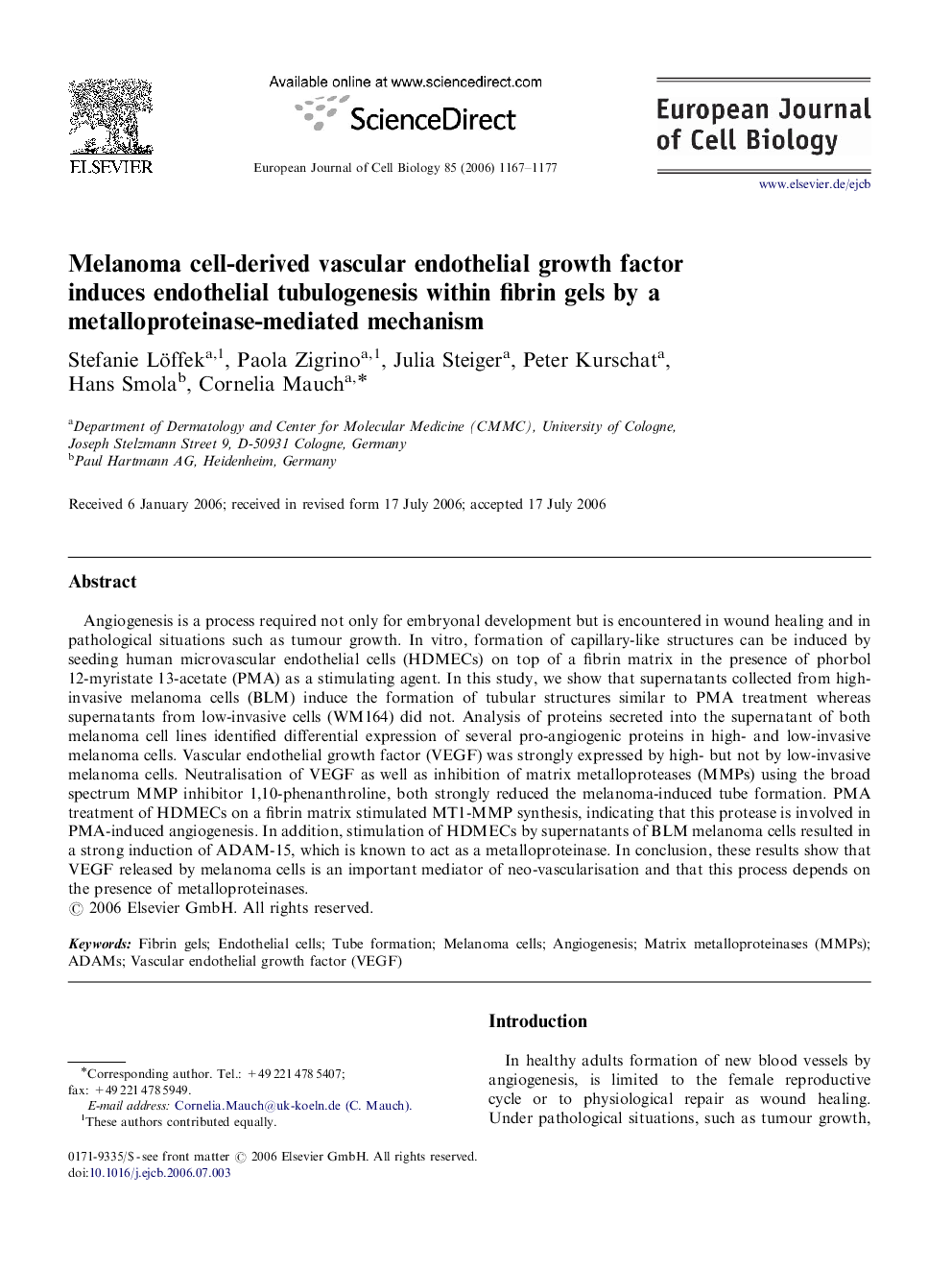| Article ID | Journal | Published Year | Pages | File Type |
|---|---|---|---|---|
| 2179108 | European Journal of Cell Biology | 2006 | 11 Pages |
Angiogenesis is a process required not only for embryonal development but is encountered in wound healing and in pathological situations such as tumour growth. In vitro, formation of capillary-like structures can be induced by seeding human microvascular endothelial cells (HDMECs) on top of a fibrin matrix in the presence of phorbol 12-myristate 13-acetate (PMA) as a stimulating agent. In this study, we show that supernatants collected from high-invasive melanoma cells (BLM) induce the formation of tubular structures similar to PMA treatment whereas supernatants from low-invasive cells (WM164) did not. Analysis of proteins secreted into the supernatant of both melanoma cell lines identified differential expression of several pro-angiogenic proteins in high- and low-invasive melanoma cells. Vascular endothelial growth factor (VEGF) was strongly expressed by high- but not by low-invasive melanoma cells. Neutralisation of VEGF as well as inhibition of matrix metalloproteases (MMPs) using the broad spectrum MMP inhibitor 1,10-phenanthroline, both strongly reduced the melanoma-induced tube formation. PMA treatment of HDMECs on a fibrin matrix stimulated MT1-MMP synthesis, indicating that this protease is involved in PMA-induced angiogenesis. In addition, stimulation of HDMECs by supernatants of BLM melanoma cells resulted in a strong induction of ADAM-15, which is known to act as a metalloproteinase. In conclusion, these results show that VEGF released by melanoma cells is an important mediator of neo-vascularisation and that this process depends on the presence of metalloproteinases.
